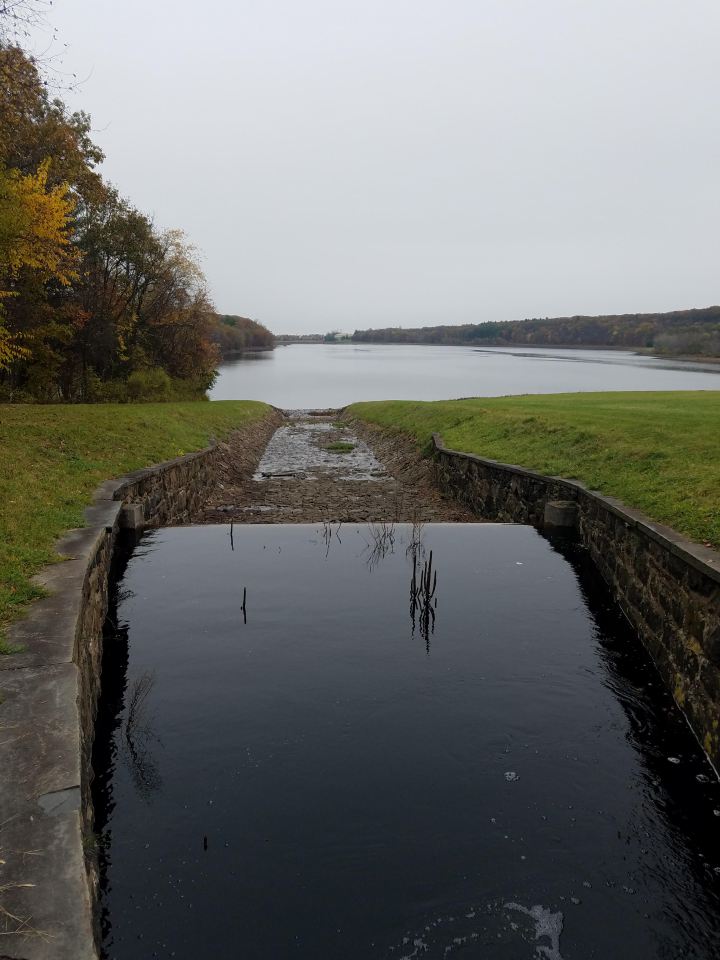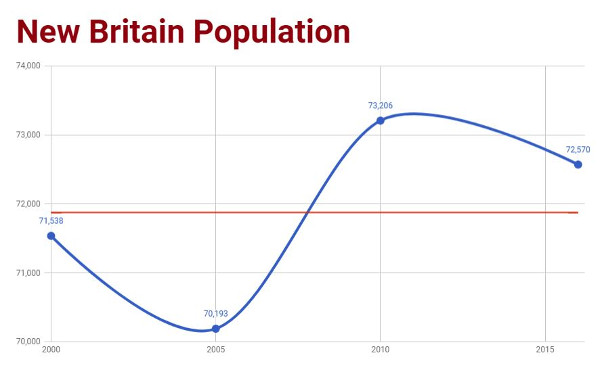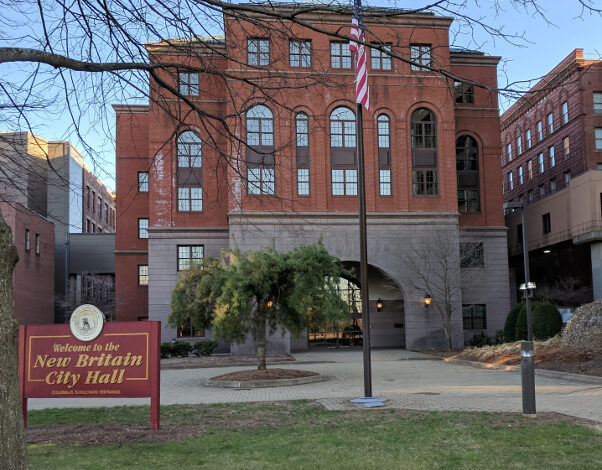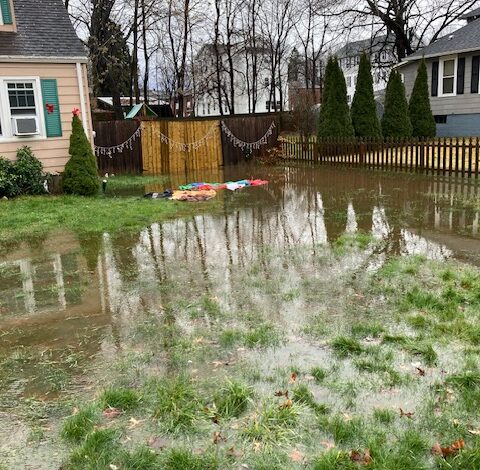Publicly available information may call into question the conclusions in the recently released report done for the city administration of Republican Mayor Erin Stewart by Lenard Engineering, Inc., that justifies the strip mining of protected drinking watershed land by saying that increased demand for water over the next forty years would necessitate a new “storage reservoir” created in the hole left after the mining is complete.
The report was done as part of a process for the city to request that it be permitted to allow strip mining on New Britain’s protected watershed lands by the Tilcon company.

The Lenard report says that more water is needed because the demands on New Britain’s water system will be increasing by 1.55 MGD (million gallons per day) from 9.39 MGD in 2015 to 10.94 MGD in 2060. The report says that the new “storage reservoir” would be capable meeting that increase by storing enough water brought from other places to increase New Britain’s available water supply, “by approximately 2 MGD over current estimates, up to approximately 20.20 MGD.”
But the historical data used in the report shows that the total consumptive use of water by New Britain residents and businesses and sales to other towns has actually gone down between 2011 and 2015, from 7.31 MGD to 6.99 MGD. The total direct sales of water to New Britain residents and businesses decreased from 5.63 MGD to 5.42 MGD, and sales to other towns went down, as well, from 1.68 MGD to 1.57 MGD.
The total consumption of water did increase from 9.08 MGD average daily demand in 2011 to 9.39 MGD in 2015, but that increase appears to have been entirely from a category listed in the report as, “Unaccounted-for Non-Revenue Water,” a category not including residential or business water use or water system backwashing or fire-fighting.
Nearly half of the increase in water use that Lenard has projected for the years between now and the year 2060 appear to be based on very high projections of New Britain population growth. This is significant, since Lenard’s calculation of New Britain’s future water consumption was calculated by simply multiplying its future population estimates by the amount of 52 gallon per person per day. Any overestimation in New Britain’s population would make the city’s future water needs appear higher than it would likely be.
For its New Britain population projections in the years 2025, 2030 and 2040, Lenard said it used data from the Connecticut Data Center at UConn. The data that the Center projected was based on current available town by town information on, “birth and mortality data from the Connecticut Department of Public Health, migration data derived from U.S. Census Bureau Decennial Census, and birth and death data from the Connecticut Department of Public Health.” But, the Connecticut Data Center cautions about the reliability of its population predictions, saying,
These projections do not claim to predict the future, as population dynamics can be influenced by economic, policy, individual decisions, and other aspects which are not accounted for in the projections model. These projections serve as a point of reference for state agencies, regional planning organizations, municipalities, researchers, and other organizations but the actual outcome may differ from the projections.
Even with this caution, from the data’s own authors, it appears that Lenard actually did use this data to predict the future water needs of the city to the year 2040.
Lenard apparently took this data even further in its own calculation of New Britain’s population for the year 2060. Lenard’s report said that, in making that calculation, it, “utilized the growth rate between 2030 and 2040 values, and assumed a similar growth to estimate the 2060 population value.” The difference between the 2030 and 2040 projections would posit a growth of 2,080 people in New Britain over that ten year period. Lenard’s calculations doubled that number to suggest that a growth of another 4,160 would occur over the twenty years from 2040 to 2060.
Lenard’s report suggests that New Britain, in 2060, will have reached its highest population, ever, at 85,149, above the population the city had fifty years ago, in its industrial heyday.
Lenard’s conclusion also appears to be contradicted by the New Britain Plan of Conservation and Development, cited in its report, which says that New Britain is unlikely to experience the new housing growth that would be needed to support such a large population growth. The New Britain Progressive calculates that, for the city to grow to 85,149 people, more than 4,600 new units of housing may have to be constructed in New Britain. Lenard cites the city development plan as saying that, “Under existing zoning, nearly 1,500 new dwelling units could be built in the City,” but adding that, “Due to a variety of of factors, this level of development is unlikely to occur.”
Lenard also used the same estimates of population growth to infer how much water demand will increase among commercial, governmental and other water users in the city. Therefore all of Lenard’s estimates of growing water use in New Britain, residential, commercial, industrial, governmental, etc., were based on these population estimates.
Data from the United State Bureau of the Census shows that New Britain’s population was 71,538 in the year 2000, 70,193 in 2005, 73,206 in 2010 and 72,570 in 2016. The average of those numbers is 71,877. Those historic population figures have fluctuated, up and down, within about 2.35% from that average, between 2000 and 2016.
 If New Britain’s population remained at around that average, then the total water use by New Britain residents and New Britain commercial, industrial, governmental and other users would appear to remain similar to or less than current levels into the future.
If New Britain’s population remained at around that average, then the total water use by New Britain residents and New Britain commercial, industrial, governmental and other users would appear to remain similar to or less than current levels into the future.
However, Lenard’s estimates of increasing demand for water on the New Britain water system, as a whole, are based more on the demands it expects will come from other towns than from New Britain water users. Even using its high New Britain population estimates, Lenard’s predicted increase in water use by New Britain residents and commercial, industrial, governmental and other water users was 0.86 MGD between 2015 and 2060. This is less than the 0.90 MGD increase in water consumption that Lenard predicted coming from other towns.
The Lenard report says water use from residents, business and others in the Kensington Fire District are expected to, “increase by approximately 161,000 gpd, or 17% in the 45 year period between 2015 and 2060.” The abbreviation “gpd” refers to “gallons per day.”
Even though water purchased by the Berlin Water Control Commission from New Britain decreased between 2011 and 2015 by 0.42 MGD, the Lenard report says that Berlin Water’s use of New Britain water is, “estimated to increase by 161,000 gpd over the next 45 years, or approximately 13%.” The report says that the increase would be, “to meet a portion of the future growth in Berlin.”
The city of Bristol also purchases water from New Britain, but Lenard says that it made assumptions about Bristol’s future purchases from New Britain because, “Detailed information on Bristol’s system, as well as existing and future water demand projections were not available from Bristol for this report.”
While Bristol’s purchase of water from New Britain between 2011 and 2015 has remained close to its average of 0.24 MGD, Lenard’s report assumed that Bristol’s purchases from New Britain would nearly double to 0.5 MGD. Lenard explained its estimate by saying that it, “assumed that Bristol would utilize their New Britain connection up to the current 500,000 gpd permit value.” That assumption would mean that Bristol’s use of New Britain water would be at the maximum possible level between 2020 and 2060, despite its recent use being half that amount.
Though the Lenard study reported no recent purchases of water from Valley Water Systems, Lenard assumed that this private water company would purchase 200,000 gpd from 2020 to 2060. Valley Water Systems serves customers in Plainville, Southington and Farmington. Even though Lenard’s study points out that Valley Water’s total demand is decreasing, and that, “Valley Water Systems and New Britain have no formal contract for the purchase of water,” Lenard’s projected demand on New Britain’s water system assumed New Britain would sell Valley Water the full 200,000 gpd it is permitted by the state to sell, during the entire period from 2020 to 2060.
Without Lenard’s assumption of increased water demand by Bristol and Valley Water and without the Lenard’s assumption of increased water use by New Britain residents, businesses and others, the total consumptive use of water might increase by 0.45 MGD by 2060, well less than the 1.76 MGD predicted by the numbers Lenard presented in its report.
All of that 0.45 MGD increase would be attributable to increase water demand in Kensington and Berlin. With the Lenard report, as well and the Stewart administration, defending the strip mining on New Britain’s drinking water land with the case that it will create a new reservoir, this may raise the possibility that the primary beneficiaries resulting from the mining may be towns other than New Britain. It may also raise the possibility that the main result of the environmental harms of the mining that the Lenard report enumerated may be the facilitation further suburban development.
The Lenard report also appears to have miscalculated the amount of water that its assumptions would indicate would go to what is called “non revenue consumption,” most of which is in a category referred to as “unaccounted for.” Lenard says that, in its predictions of future water use, it calculated that, “an allowance of 25% for future non-revenue consumption is provided, which is similar to 2014 and 2015 values.” The percentages Lenard presented for those years calculate to percentages of the total system water usage. The numbers Lenard published for 2020, 2030 and 2060, however, calculate to only twenty percent, indicating that Lenard calculated this category lower than its assumptions would indicate.
Including the full twenty-five percent assumed by Lenard for the “unaccounted for” category into calculations that only include increased water usage by Kensington and Berlin would show an increase in water use for the entire New Britain water system of 0.60 MGD between 2015 and 2060. This would be an amount considerably less than the 1.55 MGD that Lenard predicted, and would be entirely attributable to increased consumption in Kensington and Berlin.
The Stewart administration has consistently defended the plan to strip mine on New Britain’s drinking watershed land with the claim it would leave behind a new reservoir for the city. Critics have claimed that plan is a dubious excuse for allowing the Tilcon company to mine the land. The Lenard study appears to confirm what many critics have been saying about the proposed new reservoir, that filling it with water would require that water be transported from other places, rather than being filled from water flowing the surrounding land. The Lenard study refers to the proposed reservoir, in its recent report, as a “storage reservoir”.
The question of whether to allow strip mining on New Britain’s protected watershed land is expected to continue to be a controversial issue, especially as the community continues to examine the case made for the mining and the Lenard report, now presented to the state as part of that proposal.
Editor’s note: The full study, which is a large, 500MB, file can be downloaded from the state Water Planning Council by clicking on this link.



